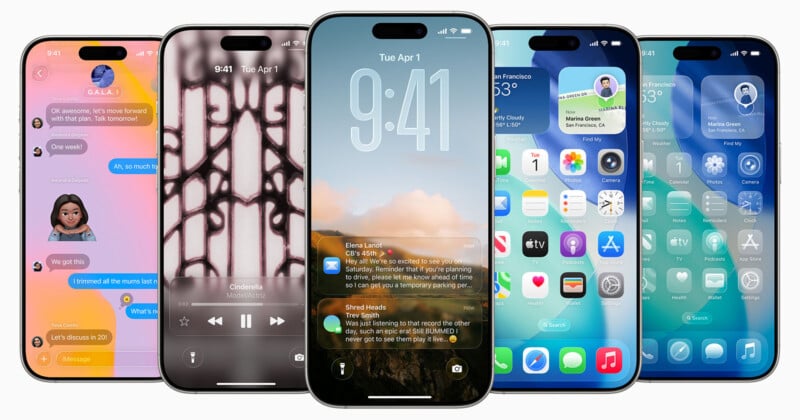iOS 26 Can Freeze FaceTime Video if Nudity is Detected

Apple’s upcoming iOS 26 update is set to introduce several new privacy and safety features, including one that may automatically pause FaceTime video calls if nudity is detected. The feature was discovered in the iOS 26 developer beta and appears to be part of Apple’s broader Communication Safety initiative.
How the Feature Works and Who It Applies To
As reported by Engadget, X user @iDeviceHelpus discovered that during a FaceTime call, if the system detects nudity, or even if someone begins to undress, a message appears on screen stating:
“Audio and video are paused because you may be showing something sensitive. If you feel uncomfortable, you should end the call.”
In iOS 26 FaceTime will pause the Video if you’re undressing while on a FaceTime call here’s the on screen prompt warning that you get asking if you would like to resume audio and video or End the call.👇 pic.twitter.com/fBs0aKUPCy
— iDeviceHelp (@iDeviceHelpus) July 2, 2025
Users then have the option to either resume the call or end it. While Apple has positioned the feature primarily for child accounts, it is currently available in the developer beta for adult users as well, with the setting managed through a toggle labeled “Sensitive Content Warning” under FaceTime preferences.
Privacy and Technical Details
Apple emphasizes in its Communication Safety articles that the nudity-detection mechanism operates entirely on-device, using local machine learning models. This ensures that all analysis of video content happens on the user’s device and that no visual data is transmitted to Apple servers, reinforcing Apple’s commitment to user privacy.
Furthermore, Apple clarifies that this and other safety features are designed with children in mind, and the Communication Safety setting is enabled by default for child accounts but can be turned off by a parent or guardian.
![]()
“Communication Safety is turned on by default on iPhone, iPad, Apple Watch, and Mac for child accounts under the age of 13,” Apple states.
“If your child receives or attempts to send photos or videos that might contain nudity, Communication Safety warns them, gives them options to stay safe, and provides helpful resources. Communication Safety helps protect your child from viewing or sharing photos or videos that contain nudity. If Communication Safety detects that a child receives or is attempting to send this type of photo or video, it blurs the photo or video before your child can view it on their device. Communication Safety also provides guidance and age-appropriate resources to help them make a safe choice, including the choice to contact someone that they trust.”
“Communication Safety uses on-device machine learning to analyze photo and video attachments and determine if a photo or video appears to contain nudity. Because the photos and videos are analyzed on your child’s device, Apple doesn’t receive an indication that nudity was detected and doesn’t get access to the photos or videos as a result,” Apple says.
![]()
What’s Next
Although the AI nudity detection feature is designed to enhance user safety for child accounts, its presence in beta for all users raises questions. It is unclear if the current wide rollout is intentional or part of broader testing during the beta phase, with the possibility that the feature may be limited to child-linked Family Sharing accounts in the final public release.

The public beta of iOS 26 is expected to launch later this month, with a general release anticipated in September 2025, alongside Apple’s new iPhone lineup. Feedback from early users may influence whether the nudity detection feature remains broadly available or is limited to specific account types.
As it stands, Apple’s nudity detection feature in iOS 26 reflects the company’s efforts to enhance digital safety, particularly for younger users. While the technology aims to reduce unwanted exposure to sensitive content during video calls, its appearance in adult settings raises broader questions about user control, privacy, and the evolving role of AI in everyday communication.
Image credits: @iDeviceHelpus and Apple. Header photo created using an asset licensed via Depositphotos.


